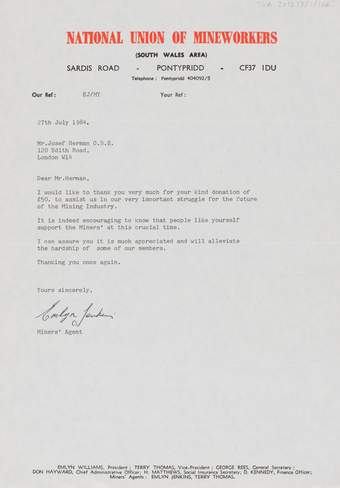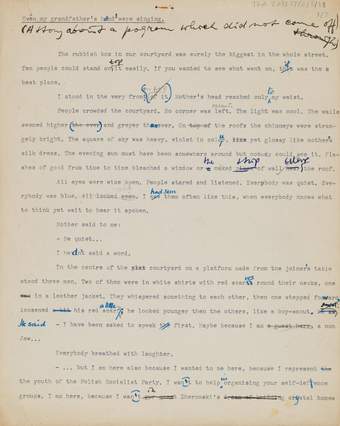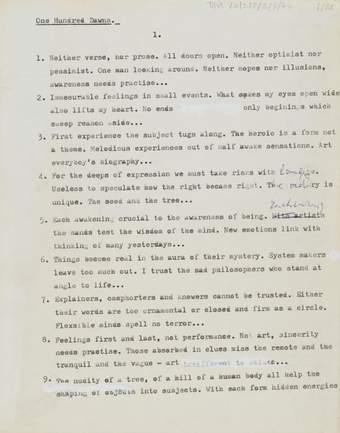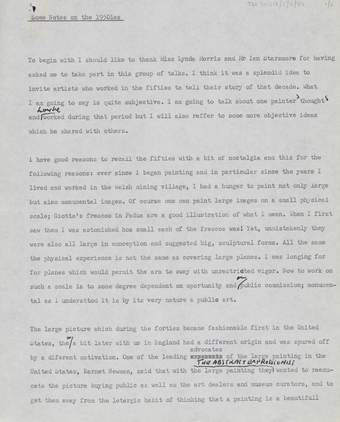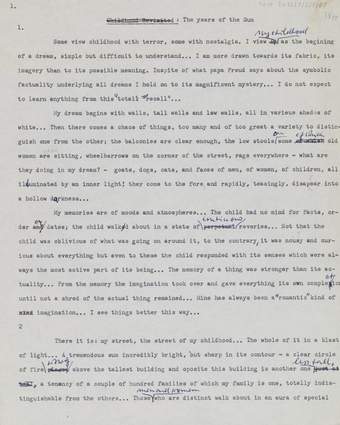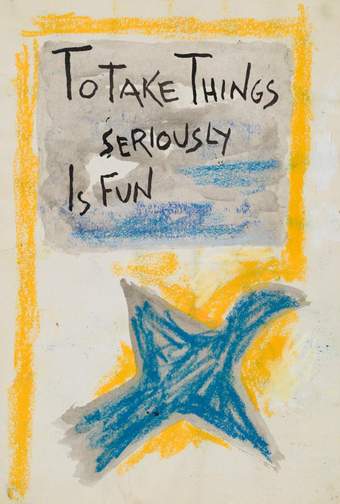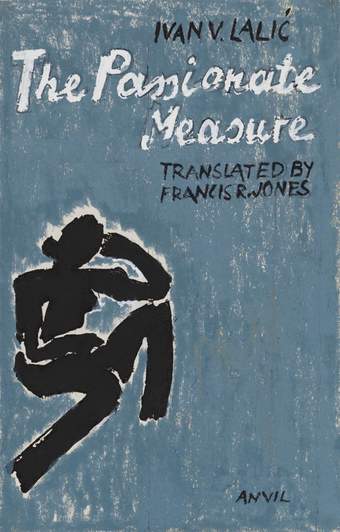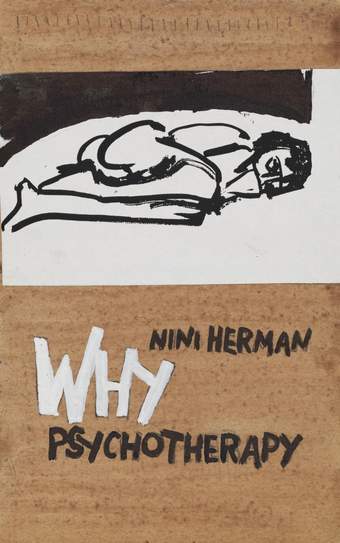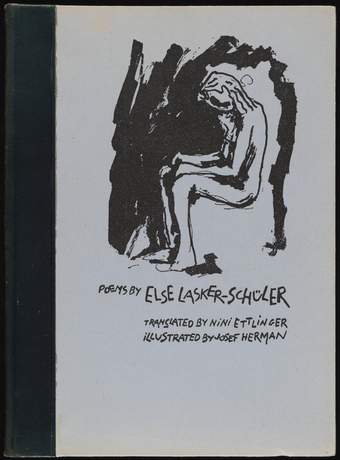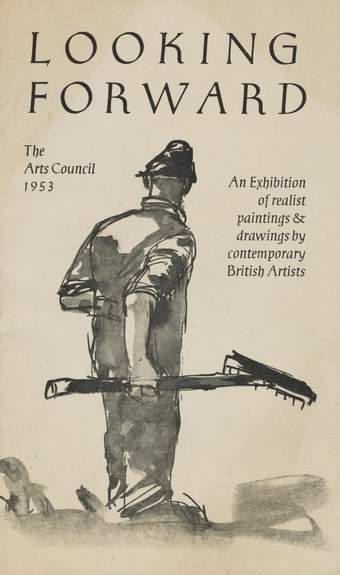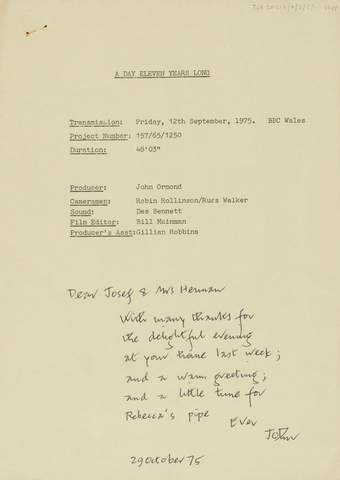Personal papers of Josef Herman
[c.1909–2000s]

Josef Herman (1911–2000) was a Polish artist who spent most of his adult life in Britain. Born in Warsaw to a Yiddish-speaking Jewish family, he initially trained as a typesetter and graphic artist, briefly attending the Warsaw School of Art from 1930 and holding his first exhibition in 1932. During the mid-1930s he co-founded a group of young politically radical artists calling themselves ‘The Phrygian Bonnet’.
In 1938, in the face of rising antisemitism, he left Poland for Brussels, attracted there by his interest in Flemish art. Following the German invasion of Belgium, he fled to France and then to Britain, settling initially in Glasgow, where he befriended fellow Jewish émigré artists Benno Schotz and Jankel Adler. Only later did he learn that his family had been murdered by the Nazis.
In 1942 Herman married his first wife, Catriona MacLeod, to the disapproval of her wealthy Scottish family. From 1944-1955 they lived in the Welsh mining village of Ystradgynlais, Powys, where Herman would produce the images of miners for which he remains best known. In 1951 he was commissioned to paint a mural of miners for the Festival of Britain. This significant contribution to Welsh visual culture was later recognised with a Gold Medal for Fine Art at the 1962 National Eisteddfod.
After a period living in Suffolk with his second wife Nini Ettlinger and their children in the 1960s, Herman returned to London in 1972, where he spent most of his time in his studio at Edith Road, West Kensington, surrounded by his collection of African miniature sculptures. Although relatively indifferent to establishment accolades and content to exist at the margins, he was nevertheless appointed OBE in 1981 and elected to the Royal Academy of Arts in 1990, and continued to exhibit until the end of his life.
The material digitised here has been selected from Herman’s papers to give a sense of his range of activities, including his writings, the script of a BBC documentary about his time in Wales, and book covers and illustrations.
Herman’s archive was catalogued as part of the Émigré Art Archives Project, generously funded by the Marie-Louise von Motesiczky Charitable Trust.
See also TGA 835, a collection of one hundred and fifty nine drawings and watercolours by Josef Herman.
- Collection Owner
- Josef Herman 1911–2000
- Collection
- Tate Archive
- Acquisition
- Presented by David Herman and the Herman family, November 2012.
- Reference
- TGA 201217
12 objects in this collection
- Title
- Personal papers of Josef Herman
- Date
- [c.1909–2000s]
- Description
- Josef Herman (1911–2000) was a Polish artist who spent most of his adult life in Britain. Born in Warsaw to a Yiddish-speaking Jewish family, he initially trained as a typesetter and graphic artist, briefly attending the Warsaw School of Art from 1930 and holding his first exhibition in 1932. During the mid-1930s he co-founded a group of young politically radical artists calling themselves ‘The Phrygian Bonnet’.
In 1938, in the face of rising antisemitism, he left Poland for Brussels, attracted there by his interest in Flemish art. Following the German invasion of Belgium, he fled to France and then to Britain, settling initially in Glasgow, where he befriended fellow Jewish émigré artists Benno Schotz and Jankel Adler. Only later did he learn that his family had been murdered by the Nazis.
In 1942 Herman married his first wife, Catriona MacLeod, to the disapproval of her wealthy Scottish family. From 1944-1955 they lived in the Welsh mining village of Ystradgynlais, Powys, where Herman would produce the images of miners for which he remains best known. In 1951 he was commissioned to paint a mural of miners for the Festival of Britain. This significant contribution to Welsh visual culture was later recognised with a Gold Medal for Fine Art at the 1962 National Eisteddfod.
After a period living in Suffolk with his second wife Nini Ettlinger and their children in the 1960s, Herman returned to London in 1972, where he spent most of his time in his studio at Edith Road, West Kensington, surrounded by his collection of African miniature sculptures. Although relatively indifferent to establishment accolades and content to exist at the margins, he was nevertheless appointed OBE in 1981 and elected to the Royal Academy of Arts in 1990, and continued to exhibit until the end of his life.
The material digitised here has been selected from Herman’s papers to give a sense of his range of activities, including his writings, the script of a BBC documentary about his time in Wales, and book covers and illustrations.
Herman’s archive was catalogued as part of the Émigré Art Archives Project, generously funded by the Marie-Louise von Motesiczky Charitable Trust.
See also TGA 835, a collection of one hundred and fifty nine drawings and watercolours by Josef Herman. - Reference
- TGA 201217

